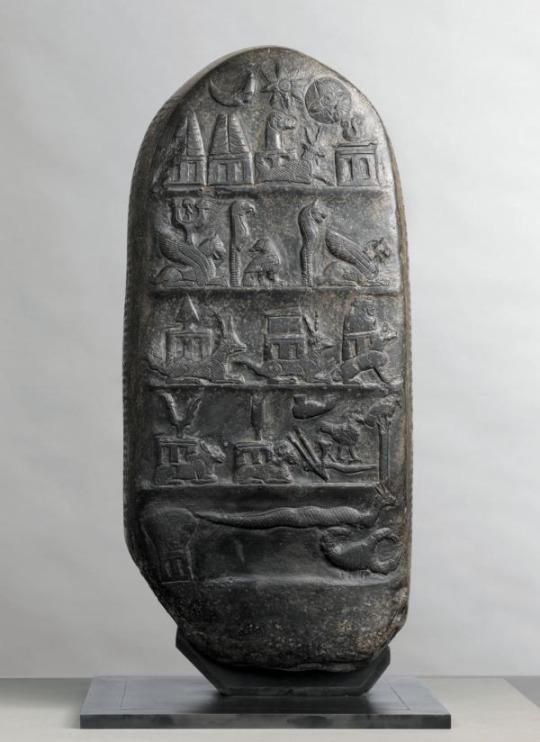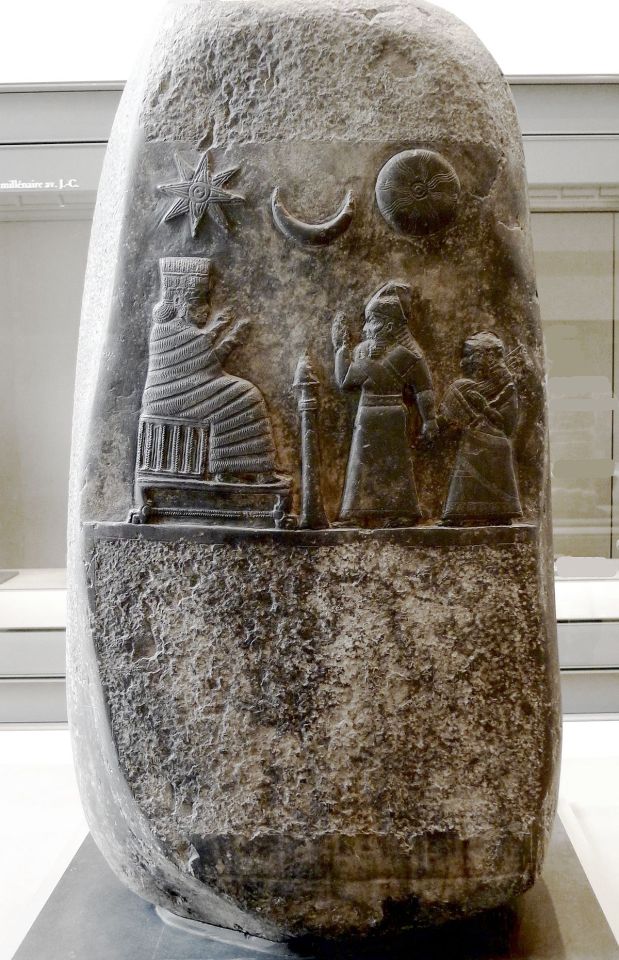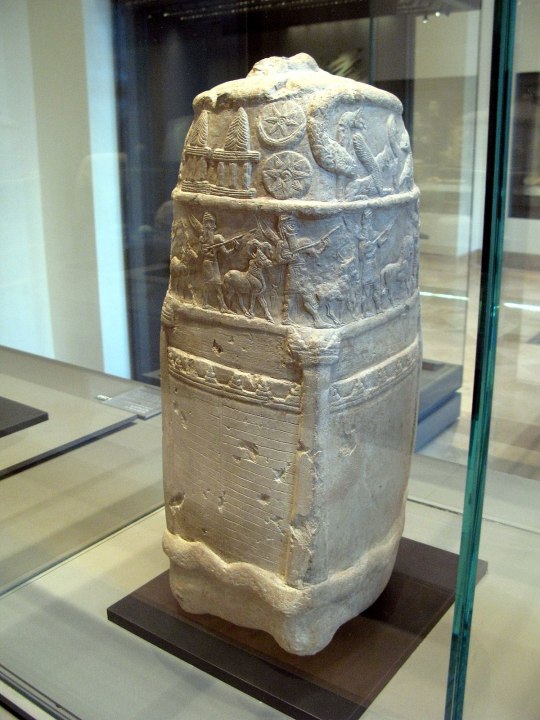#kudurru
Text
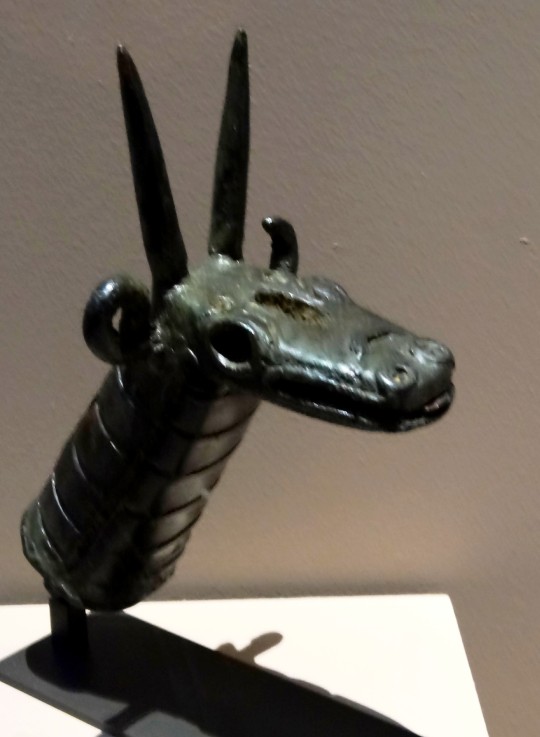



L'année du Dragon arrive !
Une longue série de dragons arrive... Après les dragons asiatiques, des dragons antiques...
Louvre-Lens, expo "L'Histoire commence en Mésopotamie" : tête d'un mushushshu, créature de Marduk - époque néo-babylonienne 700avJC
idem mais pour l'expo "Animaux fantastiques" : Caillou Michaux'', kudurru(stèle) babylonienne - moulage de 1100 av. J-C.
Marseille, musée d'histoire, expo "Trésors Coupables" - objets scythes - Caucase
voir 1 : sceaux - Girsu, époque Proto-urbaine, 3000 av.J-C. ; lazuli du prince de Kisik, époque Sumérienne, 2450 av.J-C.
#dragon#année du dragon#monstre#archéologie#louvre-lens#l'histoire commence en mésopotamie#mésopotamie#sumérien#babyloonien#mushushshu#marduk#caillou michaux#kudurru#babylone#marseille#musée d'histoire#scythes#trésors coupables#sceau#girsu#lazuli#kisik#sumer
3 notes
·
View notes
Photo
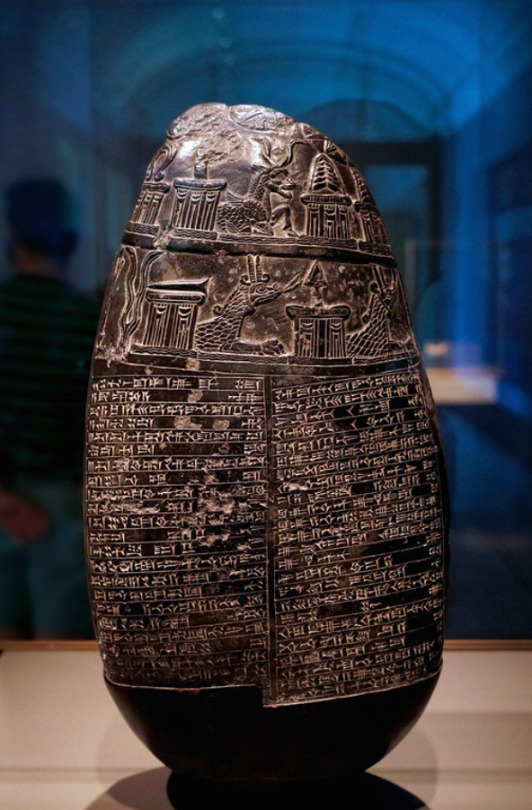
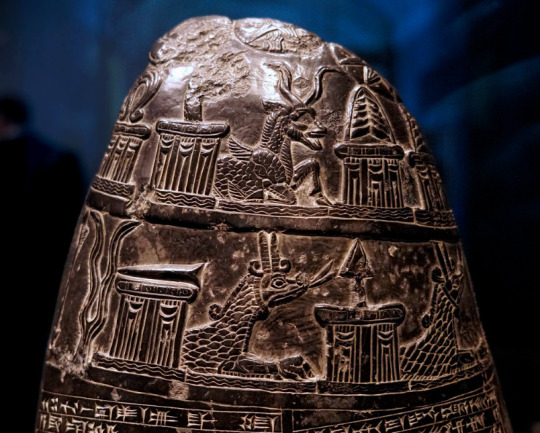
Mischaux Stone, It’ s the first 'cuneiform' monument recognized in Europe.
A boundary-stone containing a land donation document, along with a symbolic representation of the gods.
0 notes
Text
"how do I keep my art from being scraped for AI from now on?"
if you post images online, there's no 100% guaranteed way to prevent this, and you can probably assume that there's no need to remove/edit existing content. you might contest this as a matter of data privacy and workers' rights, but you might also be looking for smaller, more immediate actions to take.
...so I made this list! I can't vouch for the effectiveness of all of these, but I wanted to compile as many options as possible so you can decide what's best for you.
Discouraging data scraping and "opting out"
robots.txt - This is a file placed in a website's home directory to "ask" web crawlers not to access certain parts of a site. If you have your own website, you can edit this yourself, or you can check which crawlers a site disallows by adding /robots.txt at the end of the URL. This article has instructions for blocking some bots that scrape data for AI.
HTML metadata - DeviantArt (i know) has proposed the "noai" and "noimageai" meta tags for opting images out of machine learning datasets, while Mojeek proposed "noml". To use all three, you'd put the following in your webpages' headers:
<meta name="robots" content="noai, noimageai, noml">
Have I Been Trained? - A tool by Spawning to search for images in the LAION-5B and LAION-400M datasets and opt your images and web domain out of future model training. Spawning claims that Stability AI and Hugging Face have agreed to respect these opt-outs. Try searching for usernames!
Kudurru - A tool by Spawning (currently a Wordpress plugin) in closed beta that purportedly blocks/redirects AI scrapers from your website. I don't know much about how this one works.
ai.txt - Similar to robots.txt. A new type of permissions file for AI training proposed by Spawning.
ArtShield Watermarker - Web-based tool to add Stable Diffusion's "invisible watermark" to images, which may cause an image to be recognized as AI-generated and excluded from data scraping and/or model training. Source available on GitHub. Doesn't seem to have updated/posted on social media since last year.
Image processing... things
these are popular now, but there seems to be some confusion regarding the goal of these tools; these aren't meant to "kill" AI art, and they won't affect existing models. they won't magically guarantee full protection, so you probably shouldn't loudly announce that you're using them to try to bait AI users into responding
Glaze - UChicago's tool to add "adversarial noise" to art to disrupt style mimicry. Devs recommend glazing pictures last. Runs on Windows and Mac (Nvidia GPU required)
WebGlaze - Free browser-based Glaze service for those who can't run Glaze locally. Request an invite by following their instructions.
Mist - Another adversarial noise tool, by Psyker Group. Runs on Windows and Linux (Nvidia GPU required) or on web with a Google Colab Notebook.
Nightshade - UChicago's tool to distort AI's recognition of features and "poison" datasets, with the goal of making it inconvenient to use images scraped without consent. The guide recommends that you do not disclose whether your art is nightshaded. Nightshade chooses a tag that's relevant to your image. You should use this word in the image's caption/alt text when you post the image online. This means the alt text will accurately describe what's in the image-- there is no reason to ever write false/mismatched alt text!!! Runs on Windows and Mac (Nvidia GPU required)
Sanative AI - Web-based "anti-AI watermark"-- maybe comparable to Glaze and Mist. I can't find much about this one except that they won a "Responsible AI Challenge" hosted by Mozilla last year.
Just Add A Regular Watermark - It doesn't take a lot of processing power to add a watermark, so why not? Try adding complexities like warping, changes in color/opacity, and blurring to make it more annoying for an AI (or human) to remove. You could even try testing your watermark against an AI watermark remover. (the privacy policy claims that they don't keep or otherwise use your images, but use your own judgment)
given that energy consumption was the focus of some AI art criticism, I'm not sure if the benefits of these GPU-intensive tools outweigh the cost, and I'd like to know more about that. in any case, I thought that people writing alt text/image descriptions more often would've been a neat side effect of Nightshade being used, so I hope to see more of that in the future, at least!
225 notes
·
View notes
Text
around 530 BCE, princess and priestess Ennigaldi-Nanna of the Neo-Babylonian empire curated the world's first known public museum.
Situated in Ur, or modern-day Dhi Qar Governorate of Iraq, this museum contained artifacts belonging to Southern Mesopotamia. Many of the pieces that were exhibited were actually excavated by Ennigaldi-Nanna's father, King Nabonidus, or collected by the former King Nebuchadnezzar. Ennigaldi-Nanna helped organize all of these objects to inform and share the history of the empire.
Born sometime before 547 BCE, Ennigaldi-Nanna was the daughter of King Nabonidus, ruler of the Neo-Babylonian empire. Her name means “Nanna requests an entu” and was likely given to her after she assumed the role of entu, or high priestess, of Ur. She was the first entu in six centuries and held significant importance in Ur.
While most of her duties revolved around serving as a “human wife” to the moon god Sin, she also oversaw a school for priestesses and managed part of the temple complex of Ur.
. . .
This museum contained artifacts excavated by Nabonidus and some that were collected by Nebuchadnezzar II. They included a ceremonial mace head, a Kassite boundary marker called a kudurru, and part of a statue of the Sumerian king Shulgi, among many other objects, the oldest of which dated to around the 20th century BCE. Ennigaldi-Nanna was believed to have curated all of the artifacts and assigned labels to the collections. In fact, these ancient “museum labels” were inscribed onto clay cylinders in three different languages, one of which was Sumerian. There was even an early form of museum catalogs that were inscribed on tablets.
More at the link.
192 notes
·
View notes
Text
Necrozma, Light, and Divinity: A Very Weird Sun and Moon Theory.
I don't think the alchemical connections in Sun and Moon were ever really discussed in-depth enough for my satisfaction. There's no god damn way they'd just base the starter's first forms off the 3 primes and name one of the factions the Aether Foundation just not go anywhere else with that. Sun and Moon were pretty wild games, and I think maybe we got distracted with all the other bells and whistles, like Lusamine's bullshit, the UBs, and ya boy Guzma. Buckle up.
Before we get onto the main bit, I wanna talk a little about Mesopotamian deities. Observe this boundary stone from 12th century BC.

It's Wikimedia Commons details are as follows: Kudurru (stele) of King Melishipak I (1186–1172 BC): the king presents his daughter to the goddess Nannaya. The crescent moon represents the god Sin, the sun the Shamash and the star the goddess Ishtar. Kassite period, taken to Susa in the 12th century BC as war booty.
We've seen this 8-pointed star before, right on Necrozma's back
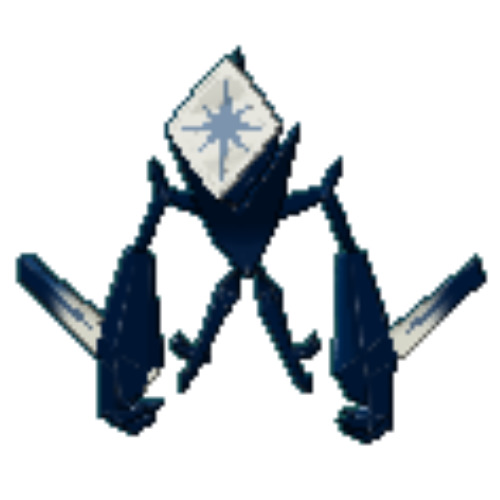
The star, as the description says, represents Inanna (called that by the Sumerians, and Ishtar by the Babylonians). She is a deity of love, war, fertility, and divine justice. She is associated with the planet Venus (we'll talk about Venus more in a bit). Inanna is referred to as the "Queen of Heaven", described as powerful but capricious.
She is also described as having some ambiguity to her gender, even having the power to alter people's gender, especially in relation to her cult. This ties into another figure Necrozma may be based on, as well as it's alchemical ties. But before I talk about that I wanna walk about the time Inanna died.
Gods die all the time in mythology. Inanna is one of the few who came back. For a time, she was trapped in the underworld by her sister Ereshkigal. Similarly, it's Sun dex entry reads "Reminiscent of the Ultra Beasts, this life-form, apparently asleep underground, is thought to have come from another world in ancient times." Whole it's entry in Sword for gen 8 is "It survives by absorbing light. After a long time spent slumbering underground, impurities accumulated within it, causing its body to darken.". Inanna is eventually saved when "sexless" or androgynous beings are sent to rescue her.
Bulbapedia's trivia section for Necrozma offers a different idea: Lucifer.
Ultra Necrozma, a being of light, four wings, draconic yet angelic, who's battle music begins with a fucking organ absolutely invokes imagery of Lucifer.

In this form, its head becomes the 8-pointed star.
Lucifer, who's name means "light bringer". Lucifer the morning star, associated with Venus. This figure is eventually absorbed into Christianity as a name for the devil, a being who himself was once an angel. It's not uncommon for media to depict him with a mixture of secondary sexual characteristics, though most are male. It's entirely possible this is because of confusion between Satan and the figure Baphomet, though I had a harder time finding info on this one. If that were the case I wouldn't entirely fault Gamefreak for it. Even I have a hard time separating the two. Also probably worth noticing that dragons come up several times in the Bible, usually in relation to Satan. Ultra Necrozma does gain the dragon type after all.
Two figures, sometimes of ambiguous gender, both associated with the 3rd brightest object in the sky? Interesting. Very interesting.
If you're still reading, congrats, we're talking about alchemy now.
It was pretty hard to understand where they were going with this until we got USUM. USUM introduced Team Rainbow Rocket, Giovanni's attempt to gather past evil the leaders into a league of supervillains (who you demolish). Seemed simple enough. Haha, Necrozma is a light god. Z-Crystals are shards of its light because it's a prism. Cool.
But maybe not the whole story. I introduce to you: The Prima Materia.
In alchemy, Prima Materia is a substance that acts as the base form of all matter. It is similar to aether. a book called the Theatrum Chemicum contains the following passage about it.
"They have compared the "prima materia" to everything, to male and female, to the [redacted]*, to heaven and earth, to body and spirit, chaos, microcosm, and the confused mass; it contains in itself all colors and potentially all metals; there is nothing more wonderful in the world, for it begets itself, conceives itself, and gives birth to itself.
*the word used here is considered a slur against intersex people, so I excluded it
Furthermore, the Lexicon Alchemaie (which i would have checked more in depth but I don't speak Latin), lists names alchemists have used for the Prima Materia. Ones that stand out to me are: heaven, the dragon, heart of the sun, spittle of the moon, Venus, the rainbow. The Prima Materia is required in the creation of the Philosopher's Stone.
In USUM, instead of Nihilego, Lusamine beings forth Necrozma. The Aether Foundation's name comes full circle here. Aether as an alchemical element is frequently associated with light and gravity.
What I'm saying is, Necrozma isn't just light. it's alchemical light. it is the Prima Materia. The energy it emits becomes other things (in this case, the Pokemon types).
Now let's take this a step further, with Type: Null and Silvally. They don't directly relate to Necrozma, but I do believe they have an alchemical inspiration that ties them to Necrozma's mythological position in comparison to Arceus.

According to Bulbapedia, Type: Null was created using cells from all known pokemon types. It was supposed to be able to change types with RKS system, inspired by tales of Arceus. There were complications with them going berserk and the project was deemed a failure.
Type: Null is a failed Philosopher's Stone, until the power of love completed it.
With high friendship, Type: Null evolves into Silvally. It breaks free of the limiter attached to its head and regains use of the RKS system, this time without going berserk. Gladion, a kid, achieves what a bunch of detached adult scientists could not.
It seems love and light are very similar concepts, at least in the Pokemon world. The fairy types are heavily associated with light, super effective against dark types, and a certain pokemon repping them when they first got revealed evolves when it loves you (and has a fairy type move).

Now, it's still difficult to say where Necrozma stands in Pokemon's mythology. It's from another world entirely. The question is whether or not Arceus has influence in those worlds. It's God. It should, right? I think there's a few possibilities, but I don't have enough information to decide for sure
-Necrozma is equivalent to Arceus in its own world. Ultra Beasts may not be described as pokemon, but they have types and use moves like them, so they must be something similar but adapted to a different environment. This one's a bit of a stretch.
-Necrozma is a creation of Arceus like everything else and plays an important function, it just made a home in a different area of time and space, or much like Giratina (another Satan inspired pokemon who is dragon type) it was sent there for some reason.
-Less likely, Necrozma is above Arceus, not as a god but a primal energy gained beast-like sentience, the divine Chaos from which Arceus came
One potential hint at this relation may lie in Arceus' name. It's likely this is a coincidence, and they didn't intend this from the get-go, but it did just happen to fit the alchemy theme. There is another concept: Archeus. Archeus is, according to Wiktionary: "The vital principle or force believed by the Paracelsians to be responsible for alchemical reactions within living bodies, and hence for the growth and continuation of life." It is another name for Anima Mundi, the soul of the world. The divine spark. Archeus has four aspects: Life, Light, Chemical, and Reflective.
I haven't worked out yet what this means, unfortunately. I could be connecting a bunch of weird mythological coincidences. But it was very fun. I would like to discuss some less grand alchemical connections in Alola sometime. Those would require a bit more research and milling over however. I genuinely wish I could give you a more satisfying conclusion here.
Altogether, I hope this gives you food for thought.
UPDATE: more thoughts
there's something I wanted to talk about that I forgot when previously writing this, and I've had more time to mull over previous thoughts.
This next section will start with the elements of gender ambiguity with Inanna and Lucifer, and how that connects to alchemy. Rebis.
An end product of the Magnum Opus (creation of the Philosopher's Stone), the Rebis is a fusion of spirit and matter, imbued with male and female qualities. (Lot of the use of that word I omitted earlier here so be advised if you look into it more). While lacking in the two heads, that certainly lines up with the element of gender ambiguity. Ultra Necrozma is the being at its strongest, when it is full of the much needed light its body had been starving for.
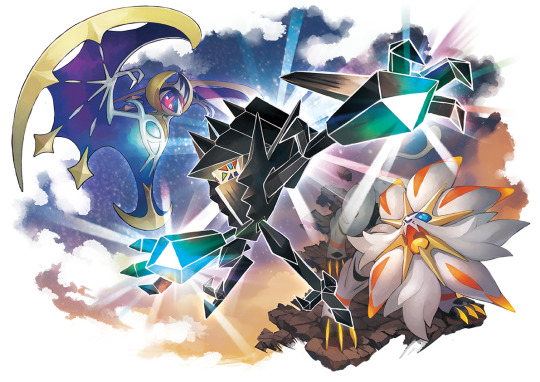
Another interesting bit regarding the Rebis is it is considered the result of "reconciliation of opposites", and imagery around it is called a chemical wedding. This is symbolized by the coming together of a king and queen, the king in red and the queen in white, each symbolizing the sun and moon respectively.
While Solgaleo and Lunala do not fit so neatly into the references to mesopotamian myth (Shamash and Sin are both male, Shamash is Ishtar's brother and Sin their father), this might add some ideas for how Solgaleo and Lunala connect to Necrozma. They are all beings of light after all, and Necrozma is able to siphon it from them when fusing with them in USUM.
I believe Necrozma may be a possible evolution of Cosmog. Bear with me, please.
Obviously, this isn't reflected in gameplay. What Cosmog evolves into depends on your version of the game. But Solgaleo and Lunala are framed as mates. You can get a second Cosmog in both games, and when you do, the other game's legendary appears. They are also referred as appearing to be male and female respectively in their Pokedex entries despite having no gender in the actual game data.
But what is Cosmog and Cosmoem in this case then? Well besides being based on nebulas, I think it may be another concept called filius philosophorum, "Philosopher's Child". One of the Filius' ways of being represented is by the Rebis, as well as a direct child of the red king and white queen. Many sites mention an egg as a symbol but don't elaborate further (like baby name websites they often feed off each other indefinitely).
Now Cosmog's name is the same in all languages, but Cosmoem's is not. It's Japanese name is Cosmovum. Cosmos and ovum. Ovum as in egg. The -em in Cosmoem's name may also be for embryo. whoever wrote the trivia section for it's Bulbapedia stage thinks it has elements of both the sun and moon in its design, and I'm inclined to agree. It also mentions something called the world egg.
The world egg is a mythological concept that spans across multiple cosmologies, but because alchemy often takes from the Greek cosmology I'll stick to that. Within Greek myth we are given the Orphic Egg, from which the primordial deity Phanes is born. Phanes' name meaning "to light, or to shine". He is described bearing a helmet and golden wings, largely referred to as male but sometimes as androgynous. His parentage varies, with having no parents at all, to Chronos (time), to Chaos, to Nyx (night). He is described as creating all other gods, or creating the day depending on the telling.
Necrozma is also Phanes, a being of light, born from a divine egg. Necrozma is a more perfect path of evolution than it's parents, but this is likely triggered by something far beyond the control of the player.
(Addendum: If you think this also sounds similar to books about Arceus in the Canalave library, you'd be right. That myth was applied to Arceus first, which makes some interesting implications.)
Now you may be thinking "wow a lot of these concepts sound like ways to talk about the Philosopher's Stone", and you'd probably be right. The Magnum Opus had many names and many ways of representing it visually, mostly alchemists wanted to keep their trade secrets. But there is an interesting one.
The ouroboros. A symbol of unity, eternity, and endless cycles. The beginning and the end are intrinsically connected.
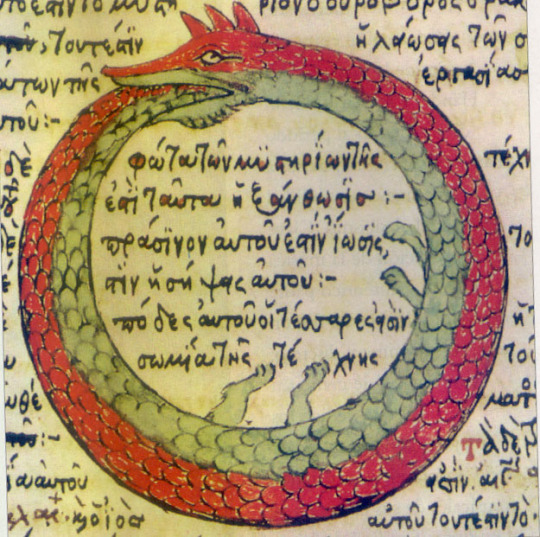
What is Necrozma doing when you meet it in USUM? it's desperately looking for light. It can't make it on its own anymore. It's base form dex entries describe it as craving light, going dormant when it can't find it.
Ultra Sun: It looks somehow pained as it rages around in search of light, which serves as its energy. It's apparently from another world.
Ultra Moon: Light is the source of its energy. If it isn't devouring light, impurities build up in it and on it, and Necrozma darkens and stops moving.
Necrozma is burning out like an old star. Necros, death.
The Philosopher's Stone is often visualized in modern media as a gem, much like it's body in this form. When the power is expended, Necrozma will be just another rock. It is a transient being. Much like the Great Work, perfection is not sustainable in practice.
But it's not all bad. Phanes, again, is also described as creating other gods. In time, it's body will break down and may become a new Cosmog. The end begets the beginning. The Prima Materia is after all, important in the Great Work's culmination.
There is another being described as creating all else though, in Pokemon. Once again it rolls back around to Arceus.
In Platinum and HGSS Pokedex entries, Arceus' goes as follows: It is said to have emerged from an egg in a place where there was nothing, then shaped the world.
These beings are connected somehow, but after more research from my first version of this I've come to the conclusion that while Necrozma and Arceus are similar (remember, Arceus can be any type, Necrozma's light becomes the differently typed Z-Crystals), Necrozma is inherently more flawed and impermanent.
It's important also to remember that the Philosopher's Stone is the work of humans. It's not divine but comes from a desire to come close to it. I can't say the same about Solgaleo and Lunala, but it's possible that Necrozma isn't natural. Necrozma was made. By whom? Who knows, but probably someone from the Ultra Recon Squad's dimension. This is merely a guess. It could just be a natural but rare occurrence. From what we've been given, this anyone's guess. Maybe were not even meant to know. Whatever the case, Necrozma is a transient being, Arceus-like but ultimately imperfect. The cycle continues eternally.
BONUS ROUND: tria prima
In the very introduction of this post I mentioned the 3 primes, and the starters's first forms having similarities to their symbols. I'm aware there are likely many alchemical connections in the story that I haven't noticed yet but I wanted to discuss something more with that.
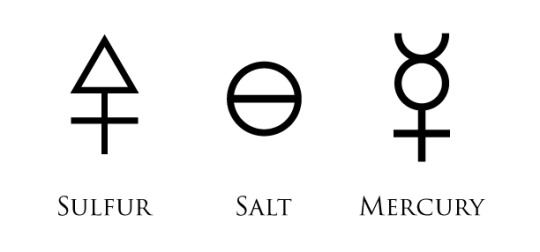
Paracelsus described the primes (sulphur, mercury, and salt) as materials from which all things are made. This is not entirely literal. Alchemy wasn't just chemistry, it was spiritual. Each prime has a different quality.
Sulphur is combustibility, soul, the divine spark
Mercury is volatility, spirit (mind), consciousness
Salt is neither, it is the body that holds them
One of the biggest examples for this is that in say, burning a piece of wood. The fire was sulphur, the smoke was mercury, and the ash was salt.
The tria prima sound a lot like prima materia don't they? It's kind of poetic the way this is implemented in USUM. You begin your journey with a prime material and it's biggest climax is with another prime material. Just as the end begets the beginning, the beginning begets the end.
~
Note for potential future update: Two substances were added to this later on: phlegm and caput mortuum (Latin for "dead head"). Caput Mortuum was waste product in a reaction. Phlegm, in the alchemical sense is "A watery distillation, especially one obtained from plant matter; an aqueous solution.", to quote Wiktionary. Phlegm was also considered a waste product. CM was produced by sublimation, and Phlegm by distillation. Phlegm doesn't appear to have a symbol but CM does: a skull.
#pokemon#gen 7#alola#necrozma#sun and moon#sumo#usum#arceus#type: null#silvally#alchemy#theory#i haven't stayed up all night writing like this since i wrote the calamity fungus theory post#mythology#cosmology#thought vomit journal
46 notes
·
View notes
Text
3 notes
·
View notes
Text
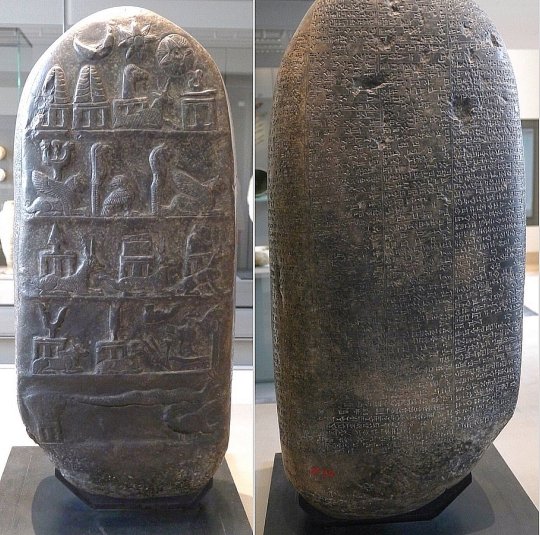
Kudurru de Melishihu - registros de pedra da dinastia Kassita na Babilônia. Na frente do Kudurru, há uma representação de todo o panteão de Deuses que preservam a ordem do mundo babilônico.
Se você deseja explicação, orientação, recomendações bibliográficas personalizadas ou aulas específicas, entre em contato pelo e-mail [email protected] e solicite um orçamento.
Terei prazer em atender, esse é o meu trabalho.
Não atendo através de minhas redes sociais. Valorize o trabalho de professores.
Hora/aula - R$ 100,00
Pacote de 4 horas/aula - R$ 300,00
FORMAS DE PAGAMENTO:
1. Pix: [email protected]
2. PicPay: @angelanatel
3. Mercado Pago: link.mercadopago.com.br/angelanatel (nesse caso acrescentando 5 reais ao valor total)
4. PayPal - [email protected] (nesse caso acrescentando 7 reais ao valor total)
5. PagSeguro:
1 hora/aula - https://pag.ae/7YYLCQ99u
Pacote de 4 horas/aula - https://pag.ae/7YYLEGWG8
Sobre mim e meu trabalho: https://linktr.ee/angelanatel
0 notes
Text
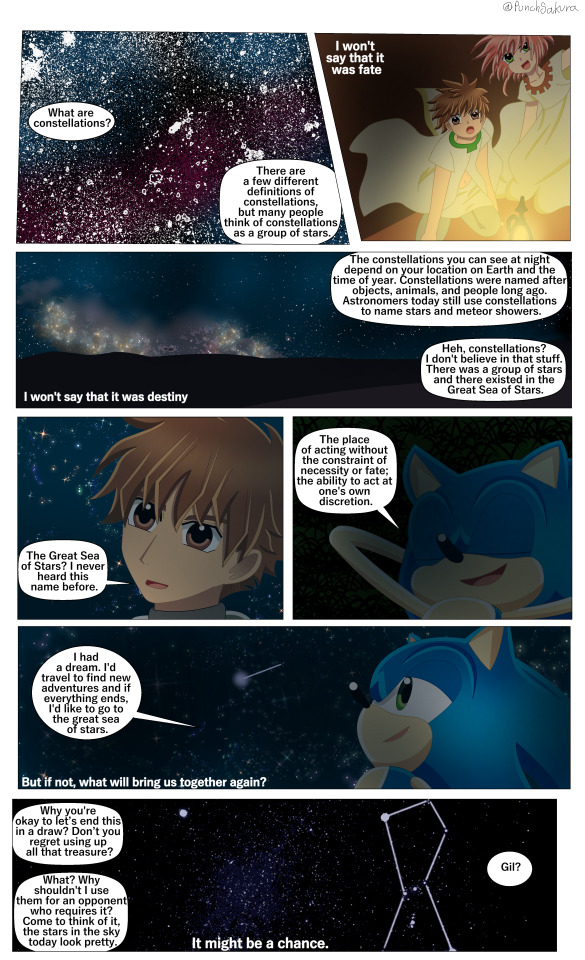
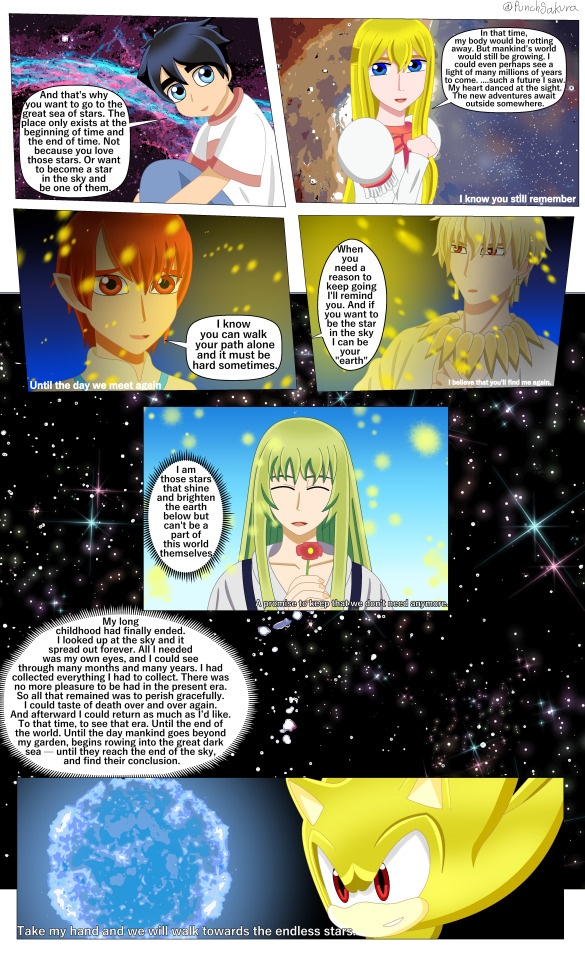
Let's Analysis
Finding the North Star also mean Our Conquest on The Ocean of Stars

Enkidu: Tools need not the northern wind or the sun

But eventually, Punch and King Gilgamesh knew that couldn't last forever. In the end, he will be alone.




Not different in Sonic X Episode 39 how Sonic felt.

They accept the truth in this world or death or the cycle of rebirth and death. They can't accept the way that should be because they're not in that part and not humans. They're like stars that they will be the same.(#the shining stars who give hope) Even when the light vanishes into the darkness, they remain the same. That's why at first they didn't want to make a relationship with anyone. But they didn't understand why they needed someone by their side to guide them. Many planets still receive the light from those stars that shine so brightly. But because without planets, there would be nothing to see just like the sun and the moon, we wouldn't be able to see each other and the beauty of this earth without light.
Peter: When you need a reason to keep going, I'll remind you. And if you want to be the star in the sky. I can be your "earth"
That's the reason behind why King Gilgamesh never abandoned the earth. And....Sonic, Punch and King Gilgamesh are the stars and they(the stars) need a place for them, Syaoran, Peter and Danny are the earth.
Journal for the History of Astronomy: Source
Some concepts in the history of astronomy have seriously affected the development of science and culture in many regions. The concept of zodiac is one of them. The zodiac as a band of constellations, within which visible motions of the Moon and planets occur, played an important role in the astronomy of ancient Mesopotamia, ancient Greece, and countries of Islam. The ideas associated with the zodiac had not only astronomical but also astrological and religious significance. The history of Mesopotamian zodiac is of particular importance, since it had a direct impact on the formation of ideas about the zodiac in ancient Greece and in Islamic countries, and through them in Europe.
The history of the Mesopotamian zodiac is a long and carefully studied issue.1 It is subdivided into two key problems closely related to each other: (1) the discovery of the band of zodiacal constellations through which the Sun, Moon, and five planets move, and (2) the division of the zodiacal band into 12 equal parts to form the so called uniform zodiac used in mathematical astronomy. Sources related to the history of zodiac are cuneiform texts of various types (not only astronomical), dated mainly from the first millennium BC. This article will investigate just one aspect of the zodiac history—the question of when and how a system of 12 zodiac constellations was developed in Mesopotamia. We also set the task of identifying traces of this system directly in cuneiform sources. Surprisingly, in the existing historical and scientific literature this question has not been studied yet. But when examined in detail on the basis of authentic sources, the answer to this question might appear to be not so simple and not so obvious.


The three main astral symbols represented on the kudurrus: a) crescent; b) sundisk; c) star.

Examples of patterns represented on the kudurrus reliefs: a) linear pattern; b) 'triangular shape' pattern.
As you can see From: The Astral Family in Kassite Kudurrus Reliefs:: Iconographical and Iconological Study of Sîn, Šamaš and Ištar Astral Representations. These three symbols will be important and hint at the future.
P.S. Don't think anything romantic yet!
#sakuraswordly#tsubasa of phantasia concept#Tsofph Danny Phantom#sonic crowe#punch whalen#fate gilgamesh#Tsofph Gilgamesh#syaoran tsubasa#tsofph peter pan#princess tsubasa#trc sakura#This blog will continue in Analyze the characters: Gilgamesh's dream and his hope. How valuable Punch is#how important Sonic is and why Sonic is important to both Punch and Gilgamesh.#tsofph#the shining stars who give hope.#the maiden man of the flower
1 note
·
View note
Text
A New Tool Helps Artists Thwart AI—With a Middle Finger
https://www.wired.com/story/kudurru-ai-scraping-block-poisoning-spawning/?utm_source=dlvr.it&utm_medium=tumblr
0 notes
Text
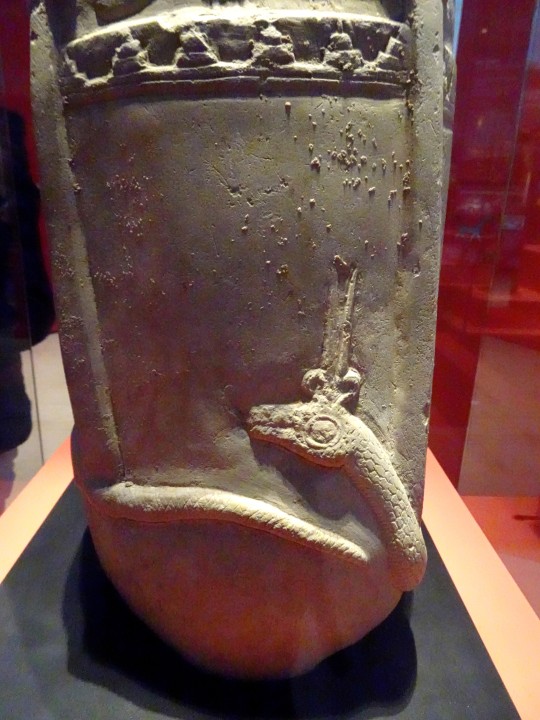



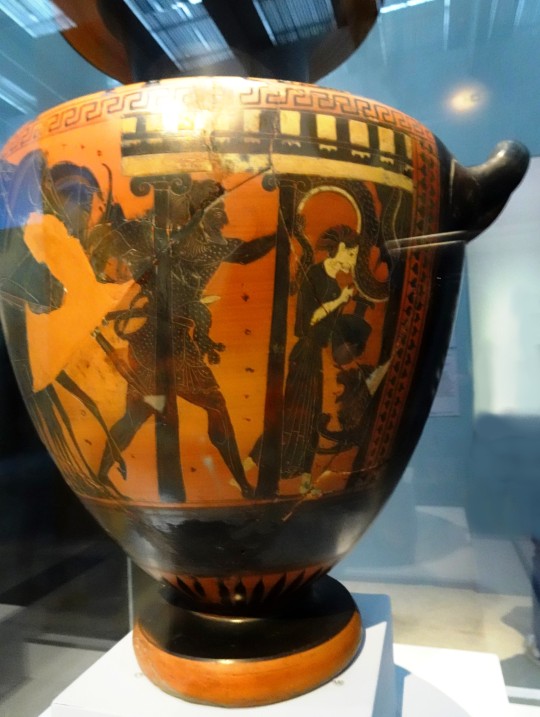


Il y a une petite quinzaine, je suis allé avec Julien et Katie, au Louvre-Lens pour une expo temporaire : “Animaux Fantastiques”. Une très belle expo ! Ici des hydres et des serpents :
stèle "kudurru" - le "bashmu", serpent venimeux de la Mer Primordiale - Irak, 1200 av. J-C.
les 2 suivantes : amphore , Héraklès, avec Athéna et Iolaos, et l'Hydre de Lerne - Athènes, 530 av. J-C.
sceau-cylindre, Ninurta contre les serpents "Bashmu" - OU bien - Marduk contre Tiamat - Irak, 900-600 av. J-C.
orthostate - Teshup, dieu hittite de l'Orage et Tasmishu combattant le serpent marin Hedammu - Aslantepe, Turquie, 1200 av. J-C.
amulettes - Egypte, 660-330 av. J-C.
#expo#louvre-lens#animaux fantastiques#monstre#créature#hydre#serpent#archéologie#mythologie#kudurru#mésopotamie#bashmu#héraklès#héraclès#athéna#iolaos#hydre de lerne#12 travaux d'hercule#ninurta#marduk#tiamat#hittite#orthostate#teshup#tasmishu#hedammu#aslantepe#turquie#égypte antique#amulettes
2 notes
·
View notes
Text

About an eclipse, Kudurru, Neo-Babylonian Letters
Letters from Babylonia, A. Leo Oppenheim
0 notes
Text
0 notes
Text
Un kudurru (que significa "límite" o "frontera" en acadio) es un tipo de documento de piedra utilizado en la antigua Mesopotamia. Si bien los monumentos de piedra se han utilizado en varias ocasiones en la antigua Mesopotamia, estos se asocian especialmente con el período kassita.
0 notes
Link
#kudurru#boundary stone#Akkadian#Mesopotamia#Kassite period#land grants#gods#Middle Babylonian period#religious beliefs#deities
46 notes
·
View notes
Photo
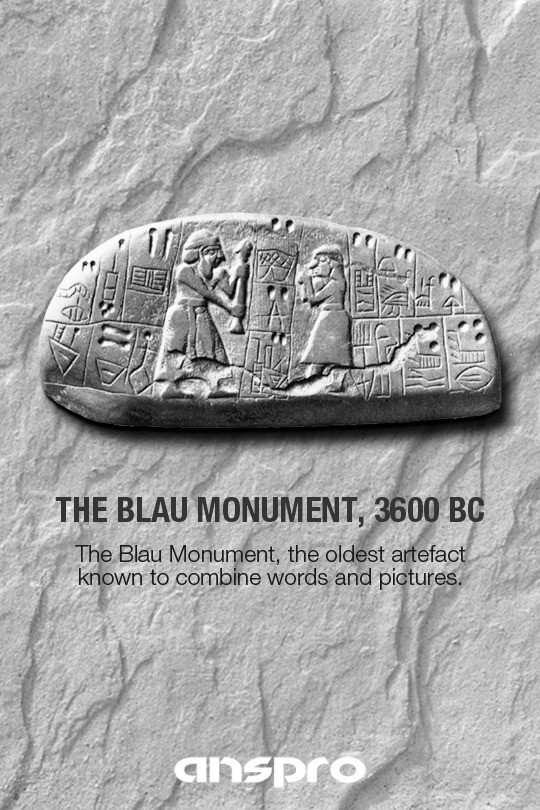
The Blau Monuments are a pair of inscribed stone objects from Mesopotamia. They are commonly thought to be a form of ancient kudurru.
Follow Us on Facebook, Instagram & LinkedIn
#ansproblog#blaumonuments#inscribed#stoneobjects#mesopotamia#ancient#kudurru#visualcommunication#kolkatadiaries#creativeoutlook
8 notes
·
View notes

